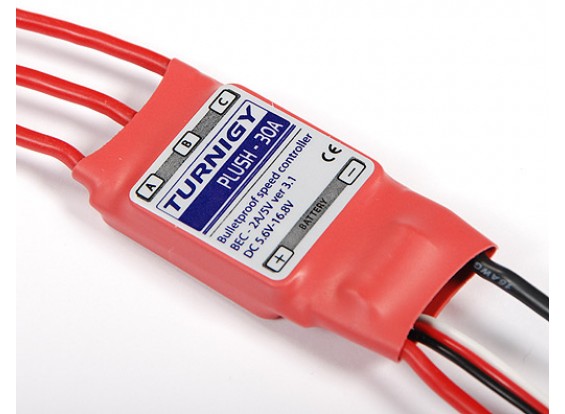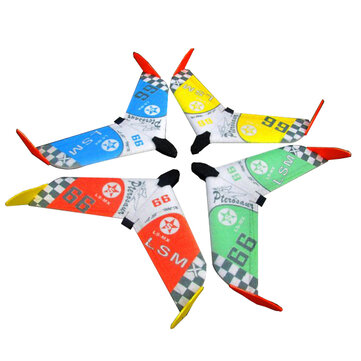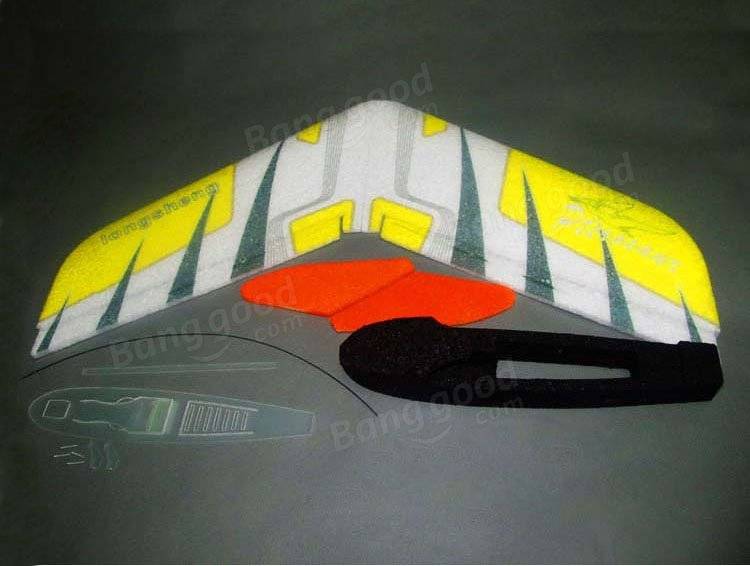Every hobby has its support costs

I was talking to a young father who was with his son at the closing of Hobby People in Lake Forrest, CA. He was eyeing an upscale drone and was asking me about the hobby. I told him I flew planes but with any hobby, you can more or less add $500 to what you think you'll spend and that's really how much it costs. When you look at bicycling, for example, you need to buy floor pumps, extra tubes, bike carriers. lights, helmets, apparel and the list goes on and on. It's a lot of money for everything other than the bike. Photography has memory cards, cases, bags, extra batteries, tripods, flashes, straps, filters and an even longer laundry list of things people acquire. But all anybody really wants to talk about are lenses and bodies.
When compared to other hobbies the RC hobby is a deal. But instead of talking about planes and motors lets look into things that you should have around at all times. These are things that will keep you out of the air until they are acquired. Because many of us don't have good hobby stores close by to purchase these items as needed, here are a list of the top ten things you should always have around. One thing I will say is the I didn't talk about tools such as X-Acto knives, screwdrivers and soldering irons. These items are specific for RC flying.
1. Adhesives
Adhesives are like Major League Baseball teams. People have their favorites for personal reasons. Adhesives the work well on EPP foam may not be as effective on EPO foam so you'll need specific adhesives for various applications. You really need to check because foam can melt with the wrong adhesive. Here are a few types to consider

Epoxy
The downside to epoxy is that it's a heavy joint perhaps used sparingly on light build planes. The epoxies come in various cure rates from 5 minutes to half an hour. I find that the solid cure time is around 3 days. Epoxies work well on EPO foam but far less effective on EPP foam. The slower cure (30 minutes) tend to give the strongest bonds. Whichever epoxy you settle on, keep plenty around in case you need a quick fix. I find that many foamy planes come with fragile wood motor mounts. I cover mine with epoxy to help give it a feel like it's made from plastic. It takes the mount from fragile to super heavy-duty.

Contact Cemenent
There are many types, the idea is that you apply it,touch the pieces together for a brief momement, remove it, let it sit on the surface for 10 minutes to half an hour, then make the connection again. My favorite contact cement for EPP foam is UHU Por. I talked about it in my
article about Uhu Por. UHU Por isn't stocked at retailers in the United States. Thus, it has to be inventoried. There are other contact cements at my local hardware store. They also seem to work okay in a pinch.

White Glue
There are common, noncritical glue applications. For example, when you bury a servo wire in a foam wing and want to cover it to keep dirt out white glue is perfect for this application. Elmer's white glue is my glue of choice. Here in the United Statesits' nearly ree.
2. Control Rods/Horns/Linkage
Have you ever bought a flashlight that came with batteries only to find out that they die with three minutes of use? You usually find this out when you really need the flashlight and have no access to batteries. Had you known the flashlight didn't come with batteries you would have picked up some good ones at the store. This is EXACTLY what happens with RC planes. Most kits contain garbage for control horns, rods and linkage. It's like they should either charge more for the plane or leave it out all together. Worse yet, I've had the stuff fall apart while the plane is in the air. Not anymore! I throw out the crap they give me in the kits and use ones I find on my own.
 |
| Dubro Micro2 Control Horn |
Control Horns
These are no "one size fits all." Chances are you'll need a few different sizes for larger and smaller planes. Sometimes the sizes of the horn are missing in the online product information. Oh well, you'll find out when it shows up! Try buying different sizes as you come across them.
Source:
Control Arms
This is a hobby that nearly demands you to have carbon fiber rods laying around. You'll need the 2mm carbon fiber rods to cut down the correct size control arms for your build. I find kits are very much hit or miss with the right size control arm. If they are too short you won't be able to correctly dial in your settings on your plane and it won't fly right or at all. This stuff is cheap out of China so there is really no reason not have 2mm carbon fiber rods in inventory. If you're into larger planes there are metal control arms that seem to work well. They bend in crashes.
Source:
Bangood
Adjustable Pushrod Connectors Linkage Stoppers
Adjustable Pushrod Connectors Linkage Stoppers
Yes, this is actually a thing. This sits on your servo's control arm and the 2mm (or whatever size you have) slides through the hole. So, I have some warnings about this thing. The nut on the top is fine. This is the one that screws down and pushes on the control rod. You may not want to over tighten it because it will snap the carbon fiber rod. If that happens you'll won't be able to make adjustments and will have to replace the rod if adjustments are desired. The other thing is the screw is prone to pop out when you're making adjustments and difficult to find. The nut on the top in the photo. That nut clamps down on the servo's control arm. It comes loose over time. I am now putting them on with Loctite. They fall out way too often.
Source:
2.1mm 1.8mm Dubro EZ Connect
3. Servos
You should have at least 1 set of each servo type you use. For me, it's pretty simple. I use Hitec HS81s, 9 gram servos and a couple 5gram servos, that's it! I like keeping more than enough servos laying around because I like to jump into new plane builds with absolutely no warning. I mean I see a plane on sale and I simply order it. I hate waiting on parts to arrive when I have a plane 90% built. This all gets back to ordering from China which was the topic of one of my postings. The stuff is amazingly cheap, but the speed at which you get it is the inverse of how badly you need it.
Stay brand loyal to servos- You'll run into this scenerio if you aren't careful- The first set of servos you buy in 9G will something like "Tower Pro." And then you'll find an amazing price for 10 on eBay of "Cheer Wing" which look IDENTICAL to the Tower Pro servo. You buy them and they are fine. You rationalize that they come from the same factory with different labels. Then one day you have to remove a servo arm and in the process, the small screw goes somewhere that you can't find. So you go to your bag and grab a fresh screw from a new servo. That's when you discover that the servos may look similar, but they're different. The servo arms aren't interchangeable and the screws are very different. In order to use that screw, you'll have to rip the servo out of your plane and install the new one, and hope that the travel for both servos is similar. This all can be avoided if you stick to one manufacturer of servos in each size.
I love saving money. I can't tell you with any certainty that the Tower Pro is better than the Cheer Wing. But I do know that I can always find the Tower Pro 9g servo. So, that's my 9g servo of choice.
9g ServosHS-81
4. Speed controllers
 |
| The Plush 30A ESC is the Levi's 501 Jeans version of speed controllers. It's just works! |
For the cost of what one speed controller set you back 15 years ago you can now have three better ones. As long as you keep the controller within range of amperage that the motor/propeller draws, and you keep it from getting wet and overheated chances are it will stick around. I've gotten them hot but never burned one out.
The cost differential between ranges is often very minor. It's not until you get beyond 40A that the price jumps. There is no harm in using a slightly higher amperage ESC than you need. Better safe than sorry. The only real downside is weight. If you are making a light build you don't want heavier speed controllers. And that's the rub, because once you go under 12A the price goes up!
If you're only flying the large planes at the club and have no use for the smaller speed controllers than by all means keep an extra of the larger ones around. However, 15 and 30 amp ESCs will work for many of the smaller builds you may plan. If you're getting into 600mm and smaller planes then yes, you may need to a 10A or smaller ESC. A 15A will help get you by until it arrives.
The rule of thumb is that you want a 20% overhead on amperage on speed controller. So, if your motor is drawing 16 amps at maximum power consumption 16*1.2= 19.2 amps. That means that a 15 amp ESC won't work, but a 20 amp will work fine. There are a few 18a speed controllers which will probably work fine. The newer ones are built for a bit of overhead. If you're not flying full throttle all the time, this should work fine.
One thing I do need to caution about are speed controllers built for drones. Some have firmware with BLheli or SimonK on them for example. Stay away from them when you're building planes. I have bad luck with them, but others haven't.
There are generic speed controllers that do work. I have a couple, they are very rough on start up. I highly don't recommend them! Spend the extra $10 and buy the Skywalker or Turnigy Plush speed controller. Those are names you can trust. Plus they take the same programming tool. When making Delta Wing planes you'll want ot set the brake on the speed controller. There are many speed controllers on the market. Yes there are other speed controllers, I just haven't found the need to branch out as of yet.
Turnigy Plush Speed ControllersSkywalker Speed Controllers
5. Industrial Strength Velcro

Probably the best tip of them all. This stuff is AMAZING. It claims to hold up to ten pounds. Since your plane probably doesn't weigh that much it can grip anything. Use it to hold down your receivers and speed controllers. Of course your batteries as well, but please also strap them down. Even with industrial strength Velcro I've lost batteries not strapped in well.
The generic Velcro is can be found with "Hook and Loop." I say that the Industrial Strength Velcro works great and can be found for not a lot of money.
Source:
Amazon
6. Carbon Fiber rods/tubes
I have this plane I LOOOOVVVEEE. I bought the same plane the next size up and on the first flight, it broke in half in the air. Though it was 1.2 meters and the plane I loved was 1 meter the thing was a freaking limp noodle. I put in 3mm carbon rods in the leading edge and a 6mm rod in the middle of the plane. Then I covered it with cold melt laminate. Mmmm mmmmm mmmm, it was like chocolate in the air!
What carbon rods can do for you is provide good, strong structural support for not a lot of money and not a lot of weight. It should be a staple in your shop.
1mm rods- Very thin, very light. You can put these in your control surfaces without a lot of worries.
2mm- These make great control rods. You can also use them in leading edges
3mm and up- Larger diameter rods for larger planes. Careful, though they are light they do add weight.
I would keep an inventory of 1mm through 5mm carbon fiber rods laying around. You can also buy piano wire which is heavier but works well for custom control rods. Now, here's the thing. The CF rods from China are dirt cheap and include shipping. But they are 500mm (half meter). In order to buy the full one meter rods if you live in the United States there are a few vendors. I like Aloft Hobbies. They also sell laminate for covering your planes. Everything they sell is at a good price but you're going to pay for shipping. So, you'll need to stock up. You'll need the full one meter rods if you're making planes that have wings larger than 20" per wing. 1 meter planes and larger will need these larger CF rods.
Source:
500mm CF Rods from China1000mm CF Rods from the USA
7. Tape/Covering
 |
| 3M Blenderm is a medical tape used for Hinge Tape. |
Often a roll or two of packing tape is good to have around for small, fast repairs. Duct tape is also good but adds a lot of weight. A good tape that isn't always readily available is 3M hingetape known as "Blenderm." It's a medical tape that is frequently sold at medical supply stores both retail and online. It's much cheaper to buy it online. It comes in various widths
It goes without say that you'll need electrical tape around for spot repairs. Thankfully this is easily found at hardware stores.
 |
| Red EconoKote |
There are different types of films. The older style are Monokote which is often used in wood built planes and Econokote for foam planes. There are now low melt laminate films of various widths that apply clear. Like MonoKote and EconoKote they are applied with an iron. The thicker films offer more protection from abrasions and more rigid support but there is a weight penalty. I use film thickness of 1.7 mil and 5.0 mil. The smooth surface helps cut down on drag and helps give a smoother, faster flight.
The million dollar question is why would you want to use EconoKote over the clear laminate? When you want to give your plane a color without using paint, because paint adds weight. I'm building a plane that's made of black foam, which is cool, but can easily get lot in the sky in certain situations. I use both Econokote to give it color and clear laminate to show off the black portions of the plane. The clear laminate is much, much, much easier to use. If you use Econokote do yourself a favor and also use 3M Super 77 spray adhesive first.
8 Connectors
 |
Bullet Connector, 3.5mm Banana Plug
|
I
wrote about connectors before, My feeeling is that you never can have enough of them around. The ones you'll need most are
Bullet connectors- Both in (Source)
3.5mm and if you're into smaller planes (Source)
2mm.
Output connector- You'll need ones that match up with the battery you use. A very common one these days is (Source)
XT60, but JST, Deans and other connectors types are also prevalent. When odering batteries be certain to get the right connectors for your planes. Also, if you order batteries with the wrong type of connector on purpose (ususally because it's much cheaper) and you plan on cutting off the old and and replacing it with the right end for your plane, CUT ONE WIRE AT A TIME. If you cut both red and black at the same time you'll see fireworks! I also prefer to get ends that have wires already soldiered on. It makes connecting wire easier.
 |
| Non-Insulated Crimp |
Crimps- Crimps are a faster way to connect wires than soldering, and if done right it's just about as good as a soldier joint. The problem is that crimps are all over the board. For my planes I use non-insulated crimps. Why? Because I like to use heat shrink around the crimps and the insulated crimps had a tendency or popping back up when heat is applied with a heat gun. The ( source)
non-insulated connectors with a good pair of crimps make a crimp that you cannot take apart ever again. Best crimps ever! If you're crimping wires of different gauges, you guessed it, I wrote about that as well.
 |
| It's good to start off with a heat shrink set like this, you'll also need a heat shrink gun. |
Heat shrink- Though technically not a connector you use so much heat shrink that its always good to have extra heat shrink available.
9. Propellers
 |
| Master Airscrew 3 blade propellers |
When I was first firing up the RC hobby I wrote about propellers (
Can a brotha get his props?). Propellers are far more complex than anything I understood at the time. But now, I have a much better understanding of what I don't know! There can be an analogy between propellers and car tires. A different size, pitch or type of propeller can give your plane different performance characteristics just like different tires can change the way your car handles. Propellers are cheap and easy to install.
My rule of thumb with propellers is that I order them in threes. One for the plane, one for backup and one for a secondary backup while I order a new propeller. Broken propellers need to be replaced because broken propellers can ruin your motor. Propellers are so cheap and a good clean propeller gives the best flight. Use your broken propellers for mixing and applying epoxy.
 |
| Prop adapter-Buy lots of these |
With different sized planes chances are you'll need a lot of different propellers. But, at the very least you don't want to break your one and only propeller and put your plane on ice while your new one shows up in the mail. If you start to get into the 3 blade or multi blade propeller you'll need the next size down. If your plane normall takes a 6" Propeller, you'll need a 5" propeller with a 3 blade propeller.
 |
| Great Planes Propeller Collet |
You will also need a lot of propeller adapters. They can bend pretty easily and once bent they are cheaper to replace than trying to fix. Seroiusly, they can be aquired for around $1 each. If the prop adapter gets bent, throw it out. Once you have a plane dialed in, I suggest upgrading to the (Source)
Great Planes Propeller Collet
 |
| The 3S 2.2A battery is faily common for most mid level planes. |
10 Batteries
LiPo- They are cheap, light and very, very good. But you'll need to baby them a bit more than other types of batteries. The number you need depends on what you're flying and how long you plan to fly it. If you're going to travel a long distance and be happy with one 20 minute flight it's up to you. For the more common sizes I keep a couple batteries so that I can double my pleasure. One of my buddies likes to sit on the beach in Mexico and fly for hours, so he buys 8 batteries in each size he needs.
Alkalines- Chances are that you can power your radio on regular alkalines when your rechargeable batteries die. For this I keep the cheap batteries around, they only have to last the day but I find they often last for weeks.
Other things you may need
Spare motor? - Chances are that you'll start to accumulate motors for a variety of reasons. There are two or three motors I use religiously. I'll always have at least one extra on hand not because I need it, but because chances are likely that I'll order a new plane and I'll be happy to have the parts ready to go once it arrives. Chances are you'll order the wrong motor by mistake at some point and you'll look for a project to put the unused motor into.
 |
| If you really get into the hobby you'll start making your own wings from large pieces of foam. |
Chunks of foam- Foam comes in various makes and thicknesses. The one thing that does happen is that you'll break off chunks of foam in crashes. The beauty of EPP foam, for example, is that you can cut it down to size and glue it in. It usually comes out fine. So, whenever you get foam, such as in custom kits that come with beds, or extra pieces that come for things like motor mounts be certain to keep it. It's hard to come by otherwise. If one of your planes has made the ultimate sacrifice and it won't be flying anymore, consider making it a foam donor.z
 |
| Hook and loop straps are used to hold down batteries in planes |
Velcro/Hook and Loop straps- You'll want some extras to strap down your batteries on your plane.
Screws- You'll need an assortment of screws, many of which can be found in metric screw kits. It's helpful at times but some screws can't be replaced once lost.


































